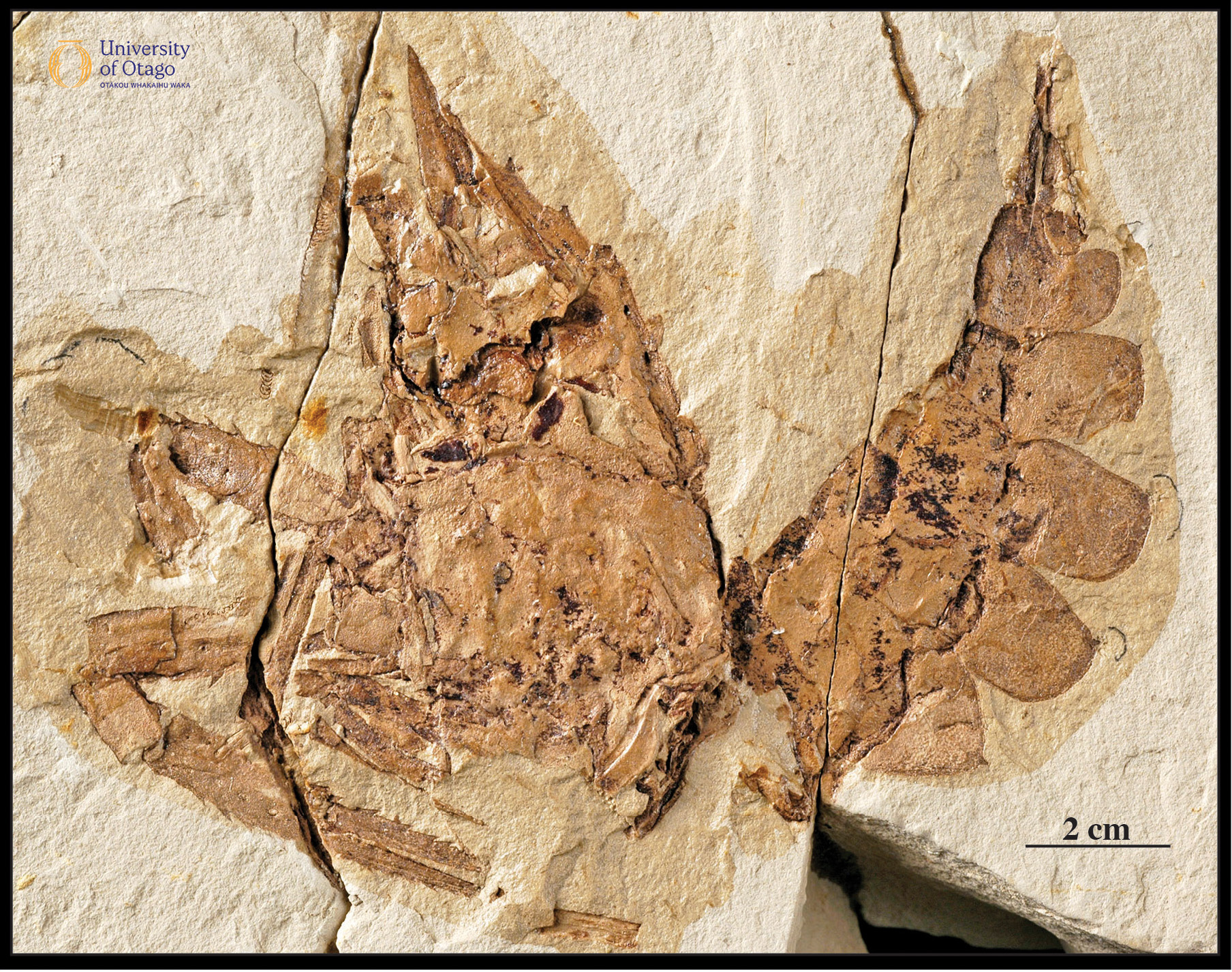53 Assembling the food basket: freshwater crayfish are deeply connected to Zealandia
Arthropoda, Decapoda: Paranephrops fordycei
Kōura, freshwater crayfish, are found in streams, rivers, lakes and sometimes swamps throughout Aotearoa today. But how long have they been here?

Ancient freshwater crayfish, Paranephrops fordycei (specimen OU 39695). In this view the head and legs are to the left of the image, the tail is to the right, and the body is bent into a V shape. Image credit: RE Fordyce. |
A specimen in the Geology Museum can help answer this question – at least since the early Miocene.
Collected in 1994 from near Bannockburn, this incomplete specimen shows the general body shape of modern kōura as well as some finer details like gills. This specimen was determined to be a new species and was named Paranephrops fordycei, in honour of Ewan Fordyce. Today kōura can live to be 25 years or more in age, growing up to 8 cm long. Occupying crevices and living under rocks, they are scavengers, living on insects or decaying leaves.
Like all crustaceans, they grow by moulting.
—Written by Daphne E Lee
| Specimen number: OU 39695 | Age: Approximately 18.7 to 15.1 million years ago (early or middle Miocene, Altonian or Clifdenian stage) |
| Locality: Bannockburn, Central Otago | Rock Formation: Dunstan Formation |
| Collected by: M Pole | |
| Citation: Feldmann, RM, Pole M. 1994. A new species of Paranephrops White, 1842: A fossil freshwater crayfish (Decapoda: Parastacidae) from the Manuherikia Group (Miocene), Central Otago, New Zealand. New Zealand Journal of Geology and Geophysics 37:163–167. doi.org/10.1080/00288306.1994.9514611 | |
23.03 to 5.33 million years ago.
The process of shedding an exoskeleton in order to grow. Also known as ecdysis.

